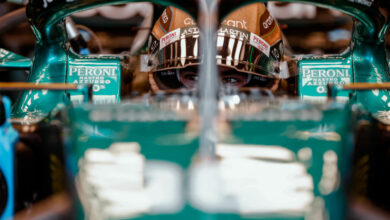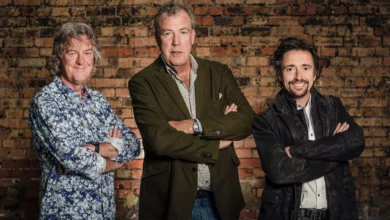Toto Wolff’s Decisive Strategy Call from Hospital Bed Secures Mercedes’ Position at Japanese GP
In an unexpected turn at the Japanese Grand Prix, Mercedes’ Toto Wolff intervened directly from his hospital bed to orchestrate a crucial team strategy. This intervention was pivotal in preventing Ferrari’s Carlos Sainz from overtaking Mercedes drivers Lewis Hamilton and George Russell.
Key Takeaways:
- Dramatic Team Dynamics: The race witnessed intense competition between Mercedes teammates Lewis Hamilton and George Russell, culminating in a strategy shift to keep them from impeding each other. This move saw Russell pit once and Hamilton twice, setting the stage for later events.
- Wolff’s Hospital Bed Intervention: Amidst the high-pressure scenario, Toto Wolff, recuperating in a hospital in Austria, made a crucial call to alter the team’s strategy. This decision involved Hamilton overtaking Russell to defend against Ferrari’s Carlos Sainz, demonstrating Wolff’s commitment and tactical acumen even from a hospital bed.
- Mixed Reactions from Drivers: The strategic decision sparked varied reactions within the team. While it successfully fended off Sainz, Lewis Hamilton expressed discontent about not being allowed to extend his lead over Russell, highlighting the complexity of team dynamics in Formula 1.

In a race filled with high stakes and intense rivalry, the Japanese Grand Prix presented a unique challenge for the Mercedes team. The event was marked by an intense on-track battle between teammates Lewis Hamilton and George Russell, raising questions about intra-team competition. Russell’s overtaking maneuver and Hamilton’s counterattack, which pushed Russell into the run-off area, highlighted the fierce rivalry.
Mercedes’ response to this rivalry was a clever strategic differentiation. By altering the pit stop strategies for Hamilton and Russell, they aimed to reduce direct competition between the two. However, this approach led to Hamilton catching up with Russell again, this time with the added pressure of Ferrari’s Carlos Sainz looming behind.
The critical moment came when Mercedes contemplated allowing Russell to give Hamilton DRS (Drag Reduction System) advantage, a move complicated by the speed difference between their cars. The situation demanded swift and decisive action, and it was Toto Wolff, despite being hospitalized for cruciate ligament surgery in Austria, who provided the necessary guidance. His directive was clear: Russell had to yield to Hamilton, ensuring that Hamilton stayed ahead and used Russell to maintain a buffer from Sainz.
This strategy, as explained by Mercedes’ trackside engineering director Andrew Shovlin, was primarily aimed at protecting Hamilton’s position from the advancing Sainz. Shovlin acknowledged the challenges in organizing the cars live and the necessity of the switch to prevent Hamilton, on older tires, from losing his position to Sainz.
Despite the strategic success, not all parties were content with the outcome. Lewis Hamilton voiced his dissatisfaction, questioning the logic behind the decision and indicating his preference to extend his lead over Russell.
This incident at the Japanese Grand Prix underscores the complex dynamics within Formula 1 teams, where strategic decisions can be influenced by factors ranging from inter-team rivalries to input from team principals, even those in hospital beds thousands of miles away. The event serves as a testament to Toto Wolff’s dedication and the intricate decision-making processes that underpin the high-octane world of Formula 1 racing.

